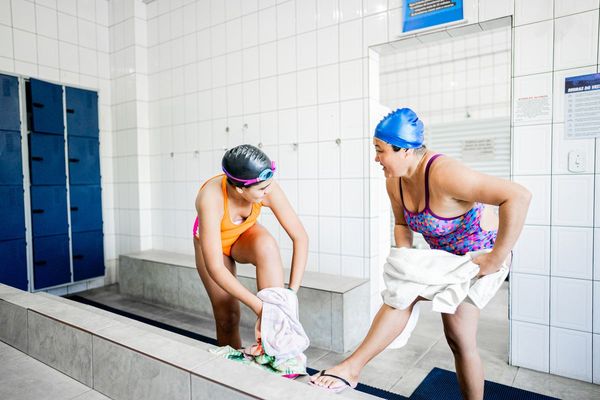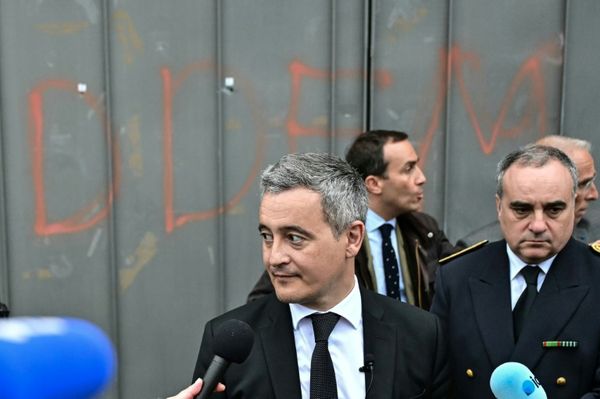
Composite: Guardian
The 47th parliament was Australia’s most diverse to date. Both houses broke records for gender, ethnic and cultural diversity.
Across both houses in the outgoing parliament, the gender split was 55% to 45% in favour of men. Women made up 39% of the House of Representatives and 58% of the Senate.
How is this likely to change after the 2025 election?
Guardian Australia analysed the incumbents and candidates to see what the next federal parliament could look like.
The state of gender representation
In Labor’s camp, 53% of representatives in the outgoing parliament were women – 18 of 26 (70%) in the Senate and 37 of 78 (47%) in the lower house.
Labor sought to increase the number of women representing the party in federal parliament in the 1990s, adopting a 35% preselection quota for women in winnable seats by 2002. In 2015, a new target was set – 45% of female representatives by 2022 and 50% by 2025.
The changes pushed the percentage of female Labor MPs and senators up from 12.5% in 1994 to 53% in 2025.
Like Labor, the Liberals have attempted to boost the number of women represented in the party. But where Labor’s policy has largely succeeded, the Liberals and their Nationals Coalition partner have not.
After the 2022 federal election, Victorian senator Jane Hume and the former federal director Brian Loughnane co-authored a report recommending women represent half the party in federal parliament by 2032.
However, it did not recommend the party adopt mandatory quotas.
The Coalition has just 11 women in the lower house, or 20% of its members, and 14 in the Senate, representing 45%. Across both houses, women make up only 29% of the Coalition’s MPs and senators.
So, based on the gender split among incumbent MPs and challengers with a realistic chance of winning a seat, what could the next parliament look like?
Coalition prospects
Some senior Liberal female MPs are retiring at this election, including Karen Andrews and Nola Marino, who are both being replaced by male candidates. That’s one reason the 47th parliament may remain a high-water mark for gender representation for the moment.
Of the Coalition’s 145 candidates and incumbents chosen to contest the 150 lower house seats (as of early April), 96 are men (66%) while 49 are women (34%).
Based on Antony Green’s estimates of margins following the redistributions in several states, there are 19 safe Coalition seats – defined by the Australian Electoral Commission as having a two-party-preferred margin of more than 10%. Just three Coalition women – Angie Bell, Sussan Ley and Anne Webster – are the incumbents in those seats, compared with 15 men. In the safe Nationals seat of Lyne, Alison Penfold is the new candidate, replacing the retiring David Gillespie.
The Coalition holds 14 fairly safe seats, where the margin is more than 6% but less than 10%. With Andrews retiring, only three of the incumbents are women – Michelle Landry, Zoe McKenzie and Melissa McIntosh.
Of the 50 marginal seats, 24 are held by the Coalition, four by women and the other 20 by men. In one seat – Bradfield – the MP Paul Fletcher is retiring and the new candidate is a woman, Gisele Kapterian, while Marino is replaced by Ben Small in Forrest.
What this means is that if all safe, fairly safe and marginal seats now held by the Coalition remained theirs after the election, female representation in the lower house would remain unchanged on 11.
Where the Coalition could increase the number of women in its party room is in marginal seats.
Of the 26 marginals held by Labor, the Greens and independents, nine are being challenged by Coalition women.
Those nine contests occur in South Australia’s Boothby, Chisholm and Kooyong in Victoria, Ryan in Queensland, Lyons, Hunter, Parramatta and Robertson in NSW, as well as Lingiari in the Northern Territory.
One additional seat, Monash, may be added to the number since the sitting member, Russell Broadbent, quit the Liberal party to sit as an independent. The new Liberal candidate, Mary Aldred, will be a plausible chance to win it, although notionally it is an independent marginal over Labor.
In the new Western Australian seat of Bullwinkel, notionally held by Labor on a slim margin, a three-way contest between the major parties is under way. The Liberals have preselected Matt Moran while the Nationals put up their former Western Australian leader Mia Davies. Labor’s candidate is Trish Cook.
If all those 11 Coalition female challengers were to win their seats, the number of female MPs would increase to 22. How that translates in percentage terms would of course depend on how many men also took seats from Labor or other incumbents, but it would certainly remain well below 50%.
Labor prospects
Labor holds 38 safe seats, 17 of which have a female MP or preselected candidate, after the retirement of Linda Burney in Barton and Maria Vamvakinou in Calwell. In fairly safe seats held by Labor, 14 of 21 have female MPs.
Holding on to marginal seats is where things get tricky for Labor.
Of the 19 marginal seats held by Labor, 10 are represented by women. Eleven female Labor candidates are contesting marginal seats held by other parties. It also has female candidates in Brisbane and Griffith, where Labor came narrowly third in 2022 and is a plausible contender.
If Labor were to hold all its own marginals and pick up all the marginal seats where women are challenging – an unlikely scenario – that would give it 54 women in the lower house. Again, how that affected the percentage of female Labor MPs would also depend on how it performed in seats contested by men.
Labor or Coalition gains might also come in seats held by independents and minor parties, of which 58% are now held by women. There are fewer seats where independent women challenging male incumbents seem likely to have a realistic chance of winning.
And in the Senate
The Senate is a somewhat easier prediction with just 40 seats up for grabs. Of those, the terms of 18 male and 22 female senators are expiring.
Eight of the women are from the Coalition, nine are Labor, four are Greens and the other is the independent Jacqui Lambie.
Typically, the top two spots in each state for a major party’s ticket are considered winnable. The WA Liberal senator Linda Reynolds is retiring, and men have been selected for the top two spots there. Trish Botha in the third spot may have a chance of being elected if the Liberals record a strong vote in the Senate.
In New South Wales, Liberal senator Hollie Hughes was bumped to third place on the ticket by another female candidate, Jess Collins. It means the gender makeup for the Coalition in the upper house is likely to show little change.
On Labor’s side, the balance will also largely remain the same. Western Australian senator Louise Pratt is retiring and newcomer Ellie Whiteaker has been selected for the top spot. Corinne Mulholland is placed second on Queensland’s ticket behind Nita Green, and has a chance of adding to Labor’s Senate team.
In Tasmania, Richard Dowling has been given the second place as Catryna Bilyk steps down, with Labor expected to retain two seats.







